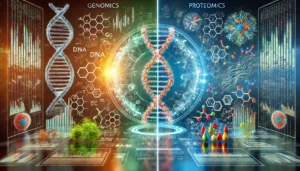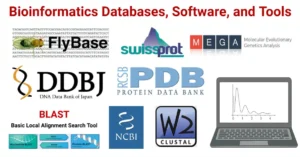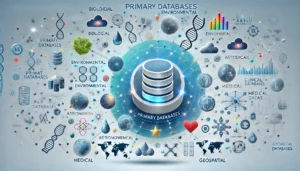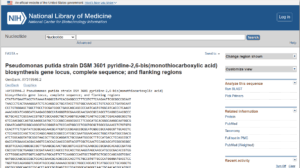Python has emerged as a leading programming language in the field of bioinformatics due to its simplicity, extensive libraries, and versatility. Its wide array of tools and applications makes it ideal for researchers and practitioners working on analyzing and interpreting biological data. This article delves into the tools, applications, and examples of Python in bioinformatics.
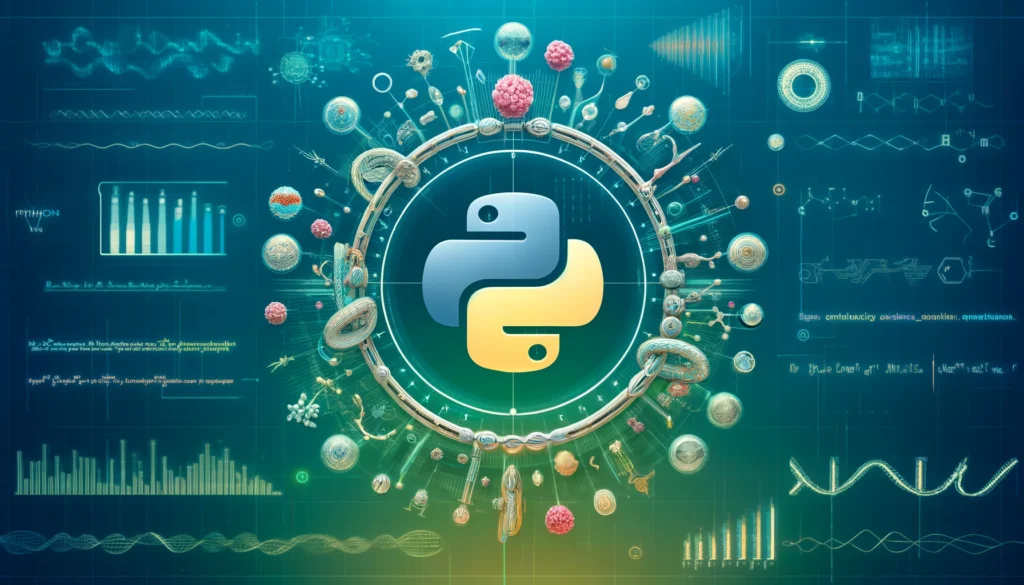
Key Reasons to Use Python in Bioinformatics
- Ease of Use: Simple syntax makes it accessible for non-programmers.
- Community Support: A vibrant community offering libraries, documentation, and forums.
- Open Source: Freely available with numerous open-source libraries tailored for bioinformatics.
- Integration: Can easily integrate with other tools, such as R, Java, and C++.
- Scalability: Suitable for handling small datasets to large-scale genomic data.
Essential Python Libraries for Bioinformatics
1. Biopython
- Core library for computational biology.
- Tools for sequence analysis, structure visualization, and bioinformatics tasks.
- Key features include parsing FASTA files, sequence alignment, and phylogenetics.
2. Pandas
- Ideal for handling tabular and structured data such as CSV files.
- Functions for data manipulation, filtering, and statistical analysis.
3. NumPy and SciPy
- NumPy: Efficient numerical computations and array manipulations.
- SciPy: Advanced scientific computations, including linear algebra and optimization.
4. Matplotlib and Seaborn
- Matplotlib: For creating static, interactive, and animated visualizations.
- Seaborn: Statistical data visualization, offering heatmaps, violin plots, and more.
5. Scikit-learn
- Machine learning library for clustering, classification, and regression analysis.
- Applications in predicting genetic variations, drug response, and more.
6. PyMOL
- Tool for 3D molecular visualization.
- Supports protein-ligand interactions and molecular dynamics studies.
7. DendroPy
- Specialized for phylogenetic analysis.
- Tools for constructing and manipulating evolutionary trees.
8. PySCeS (Python Simulator for Cellular Systems)
- Focused on systems biology.
- Simulates biochemical networks and metabolic pathways.
9. BioPandas
- Extends Pandas for biological applications.
- Works with molecular structures and sequence data.
Applications of Python in Bioinformatics
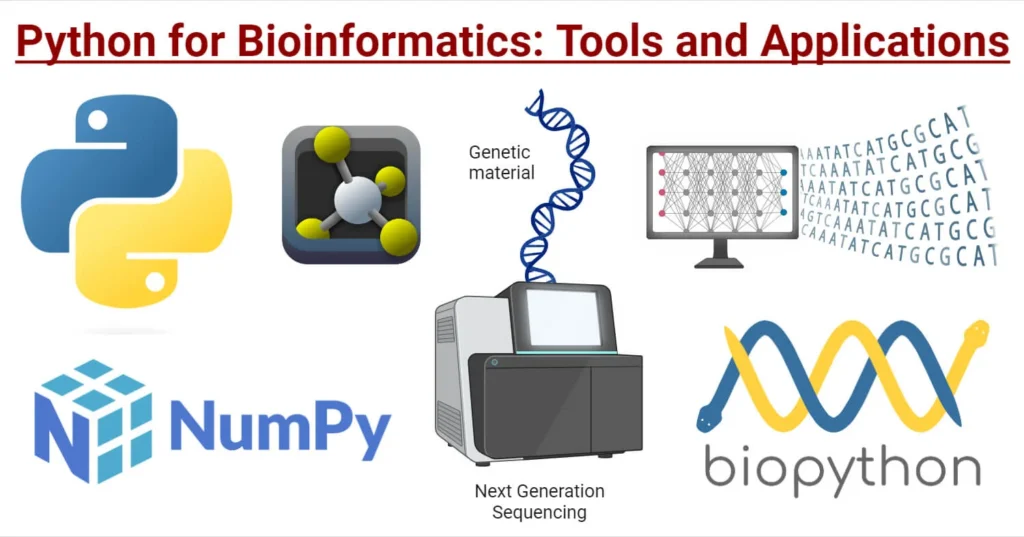
1. Sequence Analysis
- Parsing and analyzing DNA, RNA, and protein sequences.
- Tasks include motif searching, sequence alignment, and ORF identification.
2. Genomics and Transcriptomics
- Processing genomic datasets from high-throughput sequencing technologies.
- Applications include SNP discovery, gene expression analysis, and assembly.
3. Phylogenetics
- Reconstruction of evolutionary relationships using phylogenetic trees.
- Libraries like Biopython and DendroPy support these tasks.
4. Structural Biology
- Protein modeling, docking, and molecular dynamics.
- Tools like PyMOL and BioPandas are often used.
5. Systems Biology
- Simulation and analysis of metabolic pathways and gene regulatory networks.
- PySCeS and NumPy enable dynamic simulations and modeling.
6. Drug Discovery
- Virtual screening, QSAR modeling, and molecular docking simulations.
- Integration with machine learning for predicting bioactive compounds.
7. Data Visualization
- Creating publication-ready plots of genomic data, heatmaps, and interaction networks.
- Libraries like Matplotlib and Seaborn are essential for visual storytelling.
8. Machine Learning in Bioinformatics
- Applications include predicting protein structure, classifying diseases, and more.
- Scikit-learn and TensorFlow are commonly used in these applications.
Examples of Python in Bioinformatics
1. DNA Sequence Parsing
Using Biopython to parse and analyze FASTA files:
from Bio import SeqIO
for record in SeqIO.parse("example.fasta", "fasta"):
print(f"ID: {record.id}\nSequence: {record.seq}\nLength: {len(record)}")
2. Protein Structure Visualization
Using PyMOL for 3D visualization of a PDB file:
import pymol
pymol.cmd.load("example.pdb")
pymol.cmd.show("cartoon")
pymol.cmd.color("cyan", "all")
3. Phylogenetic Tree Construction
Using DendroPy for building a phylogenetic tree:
from dendropy import Tree
tree = Tree.get(path="example.tree", schema="newick")
print(tree.as_ascii_plot())
4. SNP Analysis
Using Pandas to filter genomic variants:
import pandas as pd
variants = pd.read_csv("snp_data.csv")
filtered_variants = variants[variants['impact'] == 'HIGH']
print(filtered_variants.head())
5. Heatmap Visualization
Using Seaborn to visualize gene expression data:
import seaborn as sns
import matplotlib.pyplot as plt
data = sns.load_dataset("example_dataset")
sns.heatmap(data, annot=True, cmap="viridis")
plt.show()
Advantages of Python in Bioinformatics
- Interdisciplinary Approach: Bridges biology with computational techniques.
- Reproducibility: Easy to document and share code.
- Customizability: Adaptable to diverse datasets and analysis workflows.
Challenges and Future Scope
Challenges
- Steep learning curve for biologists new to programming.
- Performance issues with extremely large datasets.
- Dependency management across libraries.
Future Scope
- Increasing integration of Python with AI and machine learning in bioinformatics.
- Advancements in real-time genomic data processing.
- Wider adoption in personalized medicine and precision biology.
Python has revolutionized bioinformatics by empowering researchers to tackle complex biological problems with ease. Its wide range of libraries and versatility makes it an invaluable tool for bioinformatics applications, paving the way for groundbreaking discoveries in life sciences.



